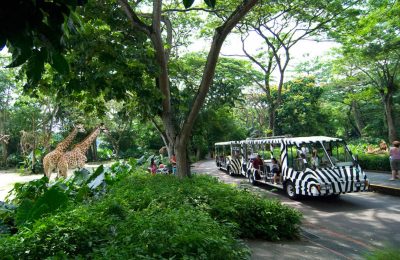Many people are searching for paths to live more sustainably. It’s not just about eco-friendly shopping or taking shorter showers, but it’s also about the products we obtain, how we eat, and how we care for our planet in general. If you’re looking for some tips on what steps you can take to live more sustainably, this post is for you.
Unsustainable Practices that Threaten Singapore’s Existence
Unsustainable practices are those that cannot be sustained indefinitely. The term can refer to environmental, economic, and social practices. We need to pay attention to our environment so it remains healthy for future generations and so we have a livable world in the future.
Singapore’s dependence on natural assets and the lack of sustainability in people’ practices threaten Singapore’s existence. For instance, squandering food and water is a frequent Singapore’s unsustainable practice. Citizens squander what we need to survive. The private sector has been committing this act by purchasing products that are not recyclable or only usable once before they break down. One-use plastics make up a significant portion of these items like straws, cups, packaging, utensils and bags.
There are many to address at the private levels too. Depending on fossil fuels, overpopulating, contaminating assets. It’s a personal choice that many people make without considering the consequences. These all represent an imbalance in Singapore’s intake of natural assets that threatens citizens’ existence.
Go Green for Better Life
We all want to make a difference in the world, but how? It can be difficult to understand where we should start. The thought of cutting Singaporeans’ carbon footprint may be daunting – where do the citizens even begin? There’re multiple variants to go green and it can be difficult knowing where to start. I’ve compiled 10 different ideas that will make you think about your personal impact on the environment, without being overwhelming or too time consuming. Some suggestions may appear small but together they have an amazing effect!
From recycling food waste and being conscious about the products Singaporeans get, there’re lots of things that the citizens may do to form a greener community with less pollution, less pressure on the environment, and even more interesting eco-tourism opportunities.
Singapore has established a reputation of being an eco-friendly city. Still, there’re other factors that facilitate making Singapore really green and sustainable: government policies, public awareness and participation like community initiatives. These efforts have led to the development of diverse eco-friendly strategies that are far more encompassing than people may realize.
Singapore has several assets that help make sustainable living simpler. Singaporeans have many initiatives held by the government and NGOs. For instance, the green metro campaign is a movement led by the government to encourage commuters to cut their carbon footprint in commuting and move towards greener solutions for their travel. The Edible Gardens and Vertical Garden in NUS provide opportunities for students to learn about sustainable living from hands-on experience. Many other reserves are at our disposal. We just have to use them!
Challenges
Singapore is a city with a strong and prosperous economy, offering plenty of opportunities to make a living. However, the city-state will continue to face challenges like an increase in population and congestion. In order to maintain the quality of life that everyone enjoys, the government needs to push hard for sustainable initiatives. The success of projects like these will determine whether Singapore can survive in the long term.
Final note
The intake of reserves at a rate that is too high and faster than the Earth can replace them. Many people may not realize they are engaging in unsustainable practices until it’s too late. One of these things is squandering food and water, which have been called the cornerstone of human survival. When we use non-renewable assets like fossil fuels to power our vehicles or make electricity, we risk exhausting natural sources. For instance, over a third of all produce in North America is thrown away each year due to improper storage or expiry date, costing consumers $1 billion annually on squandered groceries alone. Have you been considering making sustainable changes in your lifestyle and are confused as to how to do so? Don’t worry, because it is simpler than you think. There’re small changes that you can make on a daily basis that will help one live a more sustainable life. By following the tips below, you will be able to cut your carbon footprint on earth and enhance your health. And remember, making choices about which aspects of your life to focus on for sustainable living can have a dramatic impact on the future environment.


